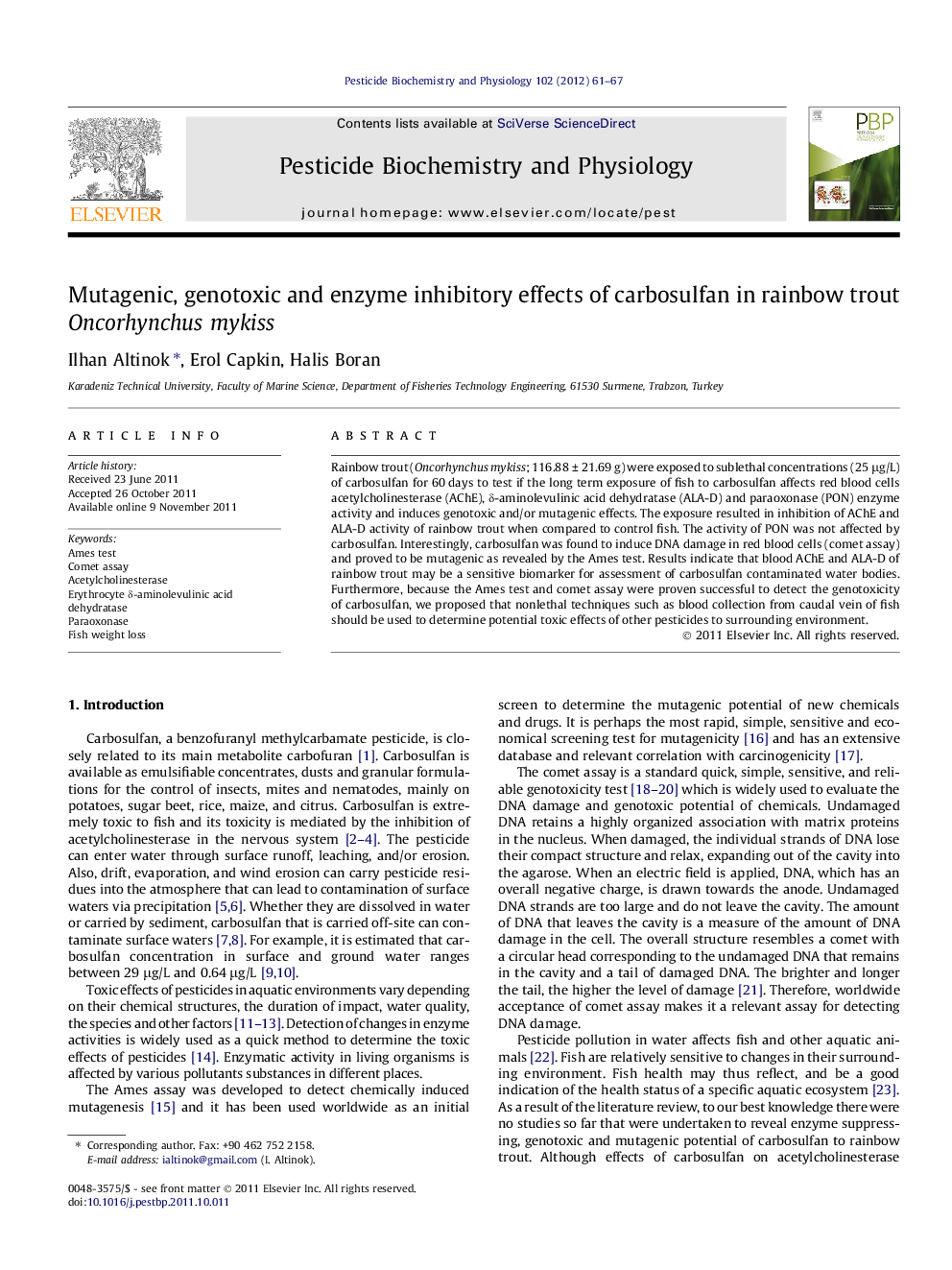| Article ID | Journal | Published Year | Pages | File Type |
|---|---|---|---|---|
| 2009680 | Pesticide Biochemistry and Physiology | 2012 | 7 Pages |
Rainbow trout (Oncorhynchus mykiss; 116.88 ± 21.69 g) were exposed to sublethal concentrations (25 μg/L) of carbosulfan for 60 days to test if the long term exposure of fish to carbosulfan affects red blood cells acetylcholinesterase (AChE), δ-aminolevulinic acid dehydratase (ALA-D) and paraoxonase (PON) enzyme activity and induces genotoxic and/or mutagenic effects. The exposure resulted in inhibition of AChE and ALA-D activity of rainbow trout when compared to control fish. The activity of PON was not affected by carbosulfan. Interestingly, carbosulfan was found to induce DNA damage in red blood cells (comet assay) and proved to be mutagenic as revealed by the Ames test. Results indicate that blood AChE and ALA-D of rainbow trout may be a sensitive biomarker for assessment of carbosulfan contaminated water bodies. Furthermore, because the Ames test and comet assay were proven successful to detect the genotoxicity of carbosulfan, we proposed that nonlethal techniques such as blood collection from caudal vein of fish should be used to determine potential toxic effects of other pesticides to surrounding environment.
Graphical abstractFigure optionsDownload full-size imageDownload as PowerPoint slideHighlights► Rainbow trout were exposed to sublethal concentrations of carbosulfan for 60 days. ► The exposure resulted in inhibition of AChE and ALA-D activity of rainbow trout. ► Carbosulfan induced DNA damage in red blood cells and proved to be mutagenic. ► Blood should be used to determine potential toxic effects of other pesticides.
